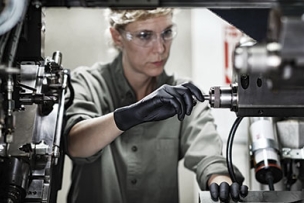MCR Safety has over forty years of experience as a leader in the field of personal protective equipment (PPE). Our assortment of offerings includes gloves, glasses, and garments which are made from the highest quality materials available to ensure maximum safety, comfort, and style.
Important work is sometimes dangerous. Chief among the many daily hazards faced by oil and gas workers is the ever-present risk of fire.
Industries take great care in preventing fires and explosions because they expose workers to extremely hazardous conditions. OSHA indicates that it is now recognized as practice to require flame-resistant clothing in the chemical and refinery industries. In fact, stepping foot onto an oil and gas operation site, such as a refinery, without proper flame-resistant PPE is virtually unheard of today.
Several stats worth noting:
- Fires and explosions are the 3rd most fatal work injuries within the oil and gas industry.
- 16% of all oil and gas fatalities are the result of exposure to fires and explosions, which cause devastating burns.
- Since 2003, there have been more than 1,500 fatal occupational injuries in the oil and gas extraction industries.
- In 2017 alone, there were 23 fatal occupational injuries due to fire or explosions in the construction of or support activities for oil and gas extraction.
With the statistics shared above clearly showing fire as a concern for oil and gas workers, wearing proper PPE should not be taken lightly. While it is impossible to eliminate the risk of fire, the proper use of flame-resistant PPE can minimize injuries and save lives.
Below, MCR Safety provides deep insight into everything you need to know about the flame-resistant PPE options they offer. They educate consumers about the differences in protection options, including distinguishing between products that are labeled as having “limited-flammability” vs. true “flame-resistance”. You can never be too well prepared when it comes to understanding the protective products available.








Talk to Us!
Leave a reply
Your email address will not be published. Required fields are marked *